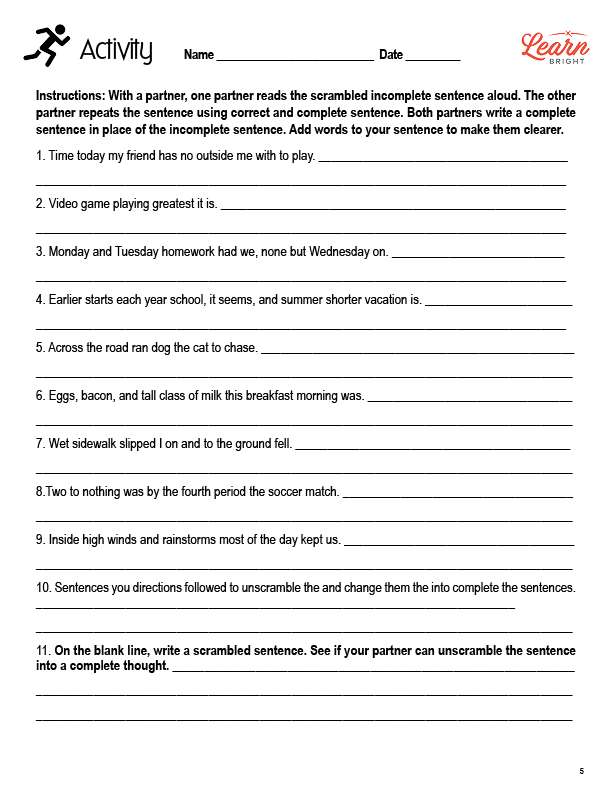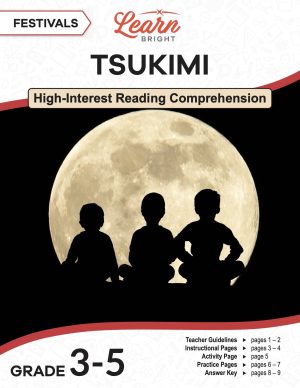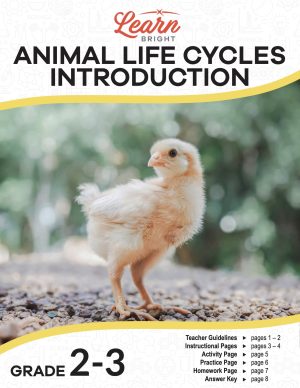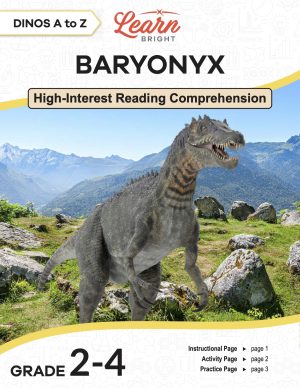Description
What our Speaking in Complete Sentences lesson plan includes
Lesson Objectives and Overview: Speaking in Complete Sentences teaches students how to speak and write correctly in formal settings. Students will learn how to use proper grammar and sentence structure. They will discover the difference between formal and informal settings. In informal settings, conversational speech is okay. By the end, they will know when it is appropriate to be less formal and when to be more formal.
There are two pages of content for this lesson plan. The first page presents a story about a place called Grammar Town. Through the story, students will discover why grammar is important to proper speech and writing. They will learn that it helps people communicate ideas and thoughts clearly and legibly.
The second page requires students to think about how to improve a conversation from the story. They will have to rewrite the statements in such a way that they make sense and are correct. The lesson then lists some basic rules that students can memorize and remember for speaking and writing. For example, every complete sentence is a complete thought. And every complete sentence has a subject.
UNSCRAMBLE ACTIVITY
The activity further tests students’ knowledge as they correct sentences that don’t fully make sense. You can divide the students into pairs for the activity. There are 10 statements for them to adjust. They will basically rearrange the words in the sentences to make them grammatically correct. Then they will write their own scrambled sentence. They will exchange their sentences with their partners to solve.
COMPLETE OR INCOMPLETE PRACTICE WORKSHEET
The practice worksheet requires students to work with a partner. They will read the sentences and decide whether or not the sentence is a fragment. If it is, they will explain why and then rewrite the sentence to make it complete. The students can take turns
SPEAKING IN COMPLETE SENTENCES HOMEWORK ASSIGNMENT
For the homework assignment, students will read a story. Then they will circle any sentences that do not make sense or are incomplete. After they read the story, they will answer five questions about complete sentences.









